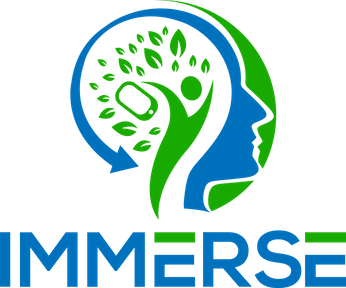Adam Kurilla
PhD student
Comenius University Bratislava
26/07/2023
Have you ever encountered someone facing challenges with alcohol or drug-related issues? It is quite likely that you have. Remarkably, over half of the global population indulges in occasional drug use or problematic alcohol consumption. However, what is more concerning is that around one out of every ten people globally suffers from a substance use disorder. This is problematic to say the least. Substance use exerts a direct negative impact on physical health, but also has a lasting effect on various aspects of life outside of physical health, such as the quality of social relationships and economic stability. The ripple effects of substance use have been widely observed across different layers of society (UNODC, 2022; WHO, 2018).
Only one in six individuals with drinking issues and one in ten drug users receive adequate treatment (Mekonen et al., 2021; Degenhardt et al., 2017). Several factors contribute to this. The scarcity of specialized healthcare services plays a significant role, making it challenging for those afflicted to access the assistance they need. However, there is also a notable hesitation among certain individuals to enter treatment programs, which further hinders the path to recovery. Additionally, even for those fortunate enough to receive treatment, approximately half of them encounter relapse during their journey to overcome addiction (McLellan et al., 2001).
In my experience, achieving successful treatment outcomes for substance use disorders depends on several crucial factors. To begin with, it is essential to help individuals in developing a deeper sense of self-awareness and to equip them with constructive coping strategies to navigate difficult situations. Equipping them with constructive coping strategies to navigate difficult situations is equally vital. However, perhaps the most significant aspect is nurturing their long-term motivation to remain abstinent. I believe this can be achieved when these individuals are treated in a safe working relationship with a treating clinician, where both parties are appropriately involved in the treatment process. However, the question remains how we can focus on improving these crucial factors.
In today's digital era, nearly everyone owns a smartphone with internet connectivity. This widespread availability of digital technology has significantly impacted healthcare through the rise of mobile health practices, commonly known as 'mHealth'. The mHealth approach involves utilizing mobile digital devices to support or enhance public health practices. The integration of mHealth tools into treatment paradigms has tremendous potential for revolutionizing addiction care too. By harnessing mHealth, treatment for individuals struggling with addiction may become more accessible, personalized, and engaging.
Currently, there are a numerous mobile apps available to reduce usage or promote abstinence from psychoactive substances. However, the problem is that many of these apps do not contain sufficient information about their theoretical underpinnings, development, validation and harmlessness (Bahadoor et al., 2021; Staiger et al., 2020). Those that have undergone validation are effective in treating addiction (Carreiro et al., 2020). Nevertheless, they are seldom used in practice.
One of the questions we are trying to answer through the IMMERSE project is why effective mHealth tools are not routinely used in treatment. Moreover, we want to go further and provide "guidance" on how to implement an ESM-based mHealth tool as effectively as possible in routine psychiatric and psychological care.
My clinical and research interest lies in the field of addiction. Within the IMMERSE project, I am interested in how patients recovering from addiction perceive the use of mHealh tools in their treatment. What do they think are the barriers or, conversely, facilitators to the use of these tools? What are their concerns and how can we help eliminate them? These are important questions that we need to answer in order to be able to successfully use mHealth tools in clinical practice.
As I mentioned earlier, a safe therapeutic alliance and adequate engagement in treatment on both sides, patient and clinician, are critical to successful treatment. Appropriate use of mHealth tools can contribute to a better understanding between the patient and their clinician, leading to a better relationship and greater motivation for the patient to participate in treatment decisions and follow the clinician's recommendations.
To summarize, in my PhD I focus on exploring the impact of our digital tool on individuals undergoing addiction treatment. I assess impact by studying whether the tool contributes to greater engagement in treatment, improves shared decision-making with the clinician about treatment progress, and contributes to a better working alliance between clinician and patient. Furthermore, I am investigating key factors that individuals undergoing addiction treatment find crucial for using ESM-based mHealth tools in therapy.
Are you interested to learn more about my work? Feel free to contact me through e-mail; adam.kurilla@uniba.sk
References
-
Bahadoor, R., Alexandre, J.-M., Fournet, L., Gellé, T., Serre, F., & Auriacombe, M. (2021). Inventory and Analysis of Controlled Trials of Mobile Phone Applications Targeting Substance Use Disorders: A Systematic Review. Frontiers in Psychiatry, 12, 622394. https://doi.org/10.3389/fpsyt.2021.622394
-
Carreiro, S., Newcomb, M., Leach, R., Ostrowski, S., Boudreaux, E. D., & Amante, D. (2020). Current reporting of usability and impact of mHealth interventions for substance use disorder: A systematic review. Drug and Alcohol Dependence, 215, 108201. https://doi.org/10.1016/j.drugalcdep.2020.108201
-
Degenhardt, L., Glantz, M., Evans-Lacko, S., Sadikova, E., Sampson, N., Thornicroft, G., Aguilar-Gaxiola, S., Al-Hamzawi, A., Alonso, J., Helena Andrade, L., Bruffaerts, R., Bunting, B., Bromet, E. J., Miguel Caldas de Almeida, J., de Girolamo, G., Florescu, S., Gureje, O., Maria Haro, J., Huang, Y., … on behalf of the World Health Organization’s World Mental Health Surveys collaborators. (2017). Estimating treatment coverage for people with substance use disorders: An analysis of data from the World Mental Health Surveys. World Psychiatry, 16(3), 299–307. https://doi.org/10.1002/wps.20457
-
McLellan, A.T., Lewis, D.C., O'Brien, Ch.,P., & Kleber, H.D. (2000). Drug dependence, a chronic medical illness: implications for treatment, insurance, and outcomes evaluation. JAMA, 284(13), 1689–1695. https://doi.org/10.1001/jama.284.13.1689
-
Mekonen, T., Chan, G. C. K., Connor, J., Hall, W., Hides, L., & Leung, J. (2021). Treatment rates for alcohol use disorders: A systematic review and meta‐analysis. Addiction, 116(10), 2617–2634. https://doi.org/10.1111/add.15357
-
Staiger, P. K., O’Donnell, R., Liknaitzky, P., Bush, R., & Milward, J. (2020). Mobile Apps to Reduce Tobacco, Alcohol, and Illicit Drug Use: Systematic Review of the First Decade. Journal of Medical Internet Research, 22(11), e17156. https://doi.org/10.2196/17156
-
United Nations Office on Drugs and Crime. (2022). World drug report 2022. United Nations, Vienna.
-
World Health Organization. (2018). Global status report on alcohol and health 2018. World health organization, Geneva.


